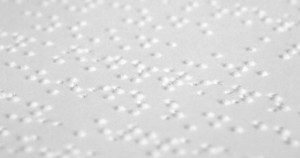
A Semi-Constant Waiting Game
Today we get most forms of entertainment at the push of a button, so we tend to hate having to wait. The situation is even worse if you can’t read print—resulting in an endless waiting game for blind readers.

Today we get most forms of entertainment at the push of a button, so we tend to hate having to wait. The situation is even worse if you can’t read print—resulting in an endless waiting game for blind readers.

This book definitely had its creepy moments, but I think other books have taken the protective older brother trope and did it better—without turning the younger brother into a plot device.

The portrayal of epilepsy in this book was frustrating and disrespectful. People with epilepsy deserve better than this.

Princess Tilda does not demonstrate the need to “overcome” her clubfoot, that word many of us in the disability community have come to loathe. To me, Tilda represents a new kind of heroine, who is strong and doesn’t need saving, but also acknowledges and shows her vulnerability and insecurities.

Wonderstruck is wonderful. It is, to date, the most creative and ambitious novel about the d/Deaf experience in America I’ve ever come across.

Vivi’s struggle with bipolar disorder was portrayed accurately and compassionately, and I would highly recommend the book for readers who want to understand the illness better.

Overall, I found the portrayal of pediatric cancer iffy—better than some, worse than others. Rather than unthinking stereotypes, though, these shortcomings felt like a result of a lack of personal experience or oversights in research.

The Mara Dyer trilogy remains one of the best fictional depictions of PTSD that I have come across. That just makes it more disappointing when the series badly misses the mark on other issues.

Although I was underwhelmed by the portrayal of albinism in Akata Witch, it’s a great novel that features the first strong, sympathetic lead with albinism I’ve seen in quite a few years.

Some people call OCD a doubting disease. Corey Ann Haydu infuses her story with the back-and-forth, pulsing presence of this doubt, resulting in a first-person, insider’s account of what the condition feels like for many.